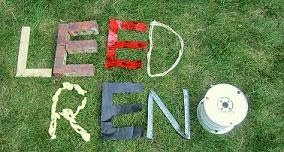There has been a growing movement to "Buy Local; Think Global". For most people this applies to what is in their grocery cart. This is a great initiative: supports local farmers, reduces packaging and shipping, fresher fruits and vegetables etc. A lot of that applies to building materials as well. While I do not really worry about the freshness of my vapour barrier, if it had to travel across the country to get to me it has an increased ecological footprint and cost.
When you think that a typical bungalow weighs 350,000 lbs, if all of your material was transported 100km less by truck that would be a fuel savings of approximately 1200L (I like how I mix metric and imperial units... that made the math even more fun) or 3 tonnes of green house gas emissions. Unfortunatey, for a lot of products 100km is a very small fraction of their trip.
Products, especially specialty ones, can travel some long distances. We are looking at cork flooring for the kitchen: a very green product in a lot of ways (will blog about that later). But, cork is harvested in Spain or Portugal. Luckily it is light, the same can not be said for granite. Granite is harvested rock, and the colours and patterns will be determined by the location they were mined. So that perfect colour combination might mean that a 800lb counter top had to travel from Brazil or South Africa or China.
LEED recognizes this. I mentioned before that our cabinets were "Environmentally Preferable Products" (MR 2.2). LEED provides points for products that not only reduce environmental impact or are low emissions but also ones that are locally produced. Their definition of locally produced means it must be extracted, processed and manufactured within 800km or 2400km if transported by rail (yeah!). For each product category you get a 0.5 point for each locally sourced item.
Being in the Montreal area, we lucked out a lot here. There is enough natural resources and a big enough population that we have a lot of options for local production. Doing a quick audit of material sources for the products we are currently using the following qualify as locally produced:
Vapour barrier
- Acoustical sealant
- Drywall mud
- Drywall
- Rigid insulation
- Floor leveller
- Primer
- Paint
- Roxul (depending on were the Basalt was mined)
To be perfectly honest , I was only aware of the locality of the rigid insulation, paint and drywall at the time of purchase. So in the case we are accidentally awesome. And added bonus for us as well, is that any reclaimed materials from our own Gut/Rehab count as locally sourced. So anything salvaged out of our deconstruction would qualify as locally sourced as well.
I anticipate that we will get the 8 point maximum for Environmentally Preferable Products but I will only show 5 right now on our scorecard to the right because that is where we would be if we stopped construction today.
I anticipate that we will get the 8 point maximum for Environmentally Preferable Products but I will only show 5 right now on our scorecard to the right because that is where we would be if we stopped construction today.

